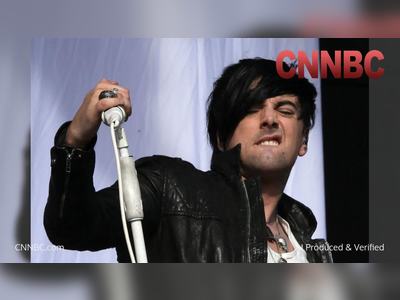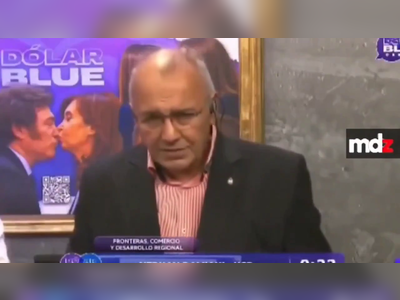Two Years of Darkness: The Harrowing Testimonies of Israeli Hostages Emerging From Gaza Captivity
After 738 days in captivity, 20 Israeli hostages recount starvation, torture, isolation, and moments of faith that helped them survive Hamas and Islamic Jihad prisons.
For seven hundred and thirty-eight days, twenty Israeli hostages endured conditions that defy comprehension.
Now, reunited with their families, they are beginning to share what happened deep inside Gaza’s tunnels and makeshift prisons — stories of starvation, torture, despair, resilience, and the unbreakable will to live.
Abintan Or was kidnapped from the Nova music festival with his partner Noa Argamani.
Separated immediately, he spent two years in near-total isolation.
After a failed escape attempt, he was chained inside a metal cage barely taller than his height for over a year.
Starved until he lost forty percent of his body weight, beaten, and cut off from the world, his only possession was a Rubik’s Cube.
Yosef Chaim Ohana, a former commander in the Givati Brigade, hid his military past.
Once a hostage deal was announced, Hamas threw him and six others into a tiny pit with no space to sit and little oxygen.
They built makeshift antennas from electrical cables and managed to pick up an Israeli radio station, hearing his father’s voice on the airwaves.
Believing he might be held for a decade, he clung to small signs of hope.
Matan Angrest suffered severe torture: beaten unconscious, subjected to electric shocks, and tied for weeks to a gas cylinder.
During his captivity, he prayed daily, taught himself Arabic from snippets of news, and sang Israeli songs to stay sane.
He overheard Israel Defense Forces ground maneuvers and feared every explosion would be his last.
Elkana Buchbot spent his captivity chained in tunnels, often without food.
As release neared, his captors overfed him so he would appear healthier.
On his wedding anniversary, he begged for and was granted a brief shower — his first moment of dignity in months.
Bar Kopperstein became an unwilling handyman for his captors, fixing water pipes and electric lines in the tunnels.
They beat him mercilessly whenever an Israeli strike killed one of their relatives.
He coped by sleeping for long hours and numbing his body against pain.
Alon Ahel was injured on October 7 and stitched without proper medical care, leaving shrapnel in his body and lasting damage to his eyesight.
Transferred before release to serve as a human shield, he spent his captivity playing music in his mind to preserve his sanity.
Evyatar David and Guy Gilboa Dalal were deliberately starved until they were skeletal.
After a humiliating propaganda video showed Evyatar digging his own grave, Hamas force-fed them to manipulate their appearance.
Guy lost hearing and muscle strength and learned only late in captivity that his brother was alive.
David and Ariel Kunio, twin brothers abducted with their families, were separated and held in isolation.
David learned months later that his wife and children had been killed.
Ariel spent his entire captivity alone, unaware of his loved ones’ fate until his release.
Twins Gali and Ziv Berman were subjected to torture, starvation, and medical neglect.
Some captors spoke Hebrew, deepening their psychological torment.
Omri Miran was moved twenty-three times, held in cages, and at times contemplated seizing weapons to escape.
He marked every day mentally and cooked for his captors to stay alive.
In the first months, five hostages were crammed into a space barely large enough to sit.
Nimrod Cohen, also held in a barred cell, faced relentless interrogations and physical abuse.
Captors mistakenly thought he was Bedouin and nicknamed him “Majdi”.
Like many others, he learned Arabic to survive.
Eitan Horen lost sixty kilograms and at times could drink only salty water.
After his brother Yair was released, he remained alone and gravely ill, tending to festering wounds by himself.
Eitan Mor recalled chilling conversations with Hamas commander Az al-Din al-Haddad, who mocked his family’s protests.
He described countless brushes with death and said he relied on his parents’ lessons: sometimes, he realized, wisdom was more important than being right.
Shegev Kalphon vowed that if he were ever released, he would shout “Shema Yisrael” in defiance.
His faith sustained him through two Yom Kippur fasts.
His mother learned from fellow hostages that Shegev endured some of the worst conditions in Gaza.
Maksim Harkin, who successfully concealed his military identity, described “inhuman conditions” and the psychological shock of watching news of mass protests in Israel.
“It was proof we were not forgotten,” he said.
Rom Breslavsky was pressured to convert to Islam but refused.
He spent two years in solitary confinement, at times in rooms with the bodies of dead hostages.
Captors tried to convince him that no one in Israel cared about his fate.
In one desperate act of defiance, he set fire to militant clothing to boil water, triggering a fire that nearly exposed his location.
When an angry mob stormed the house, he whispered prayers, begging not to die in a lynching.
Matan Tsangauker, held with fellow hostage Idan Alexander, stopped eating and speaking as his health declined.
During one bombing, their tunnel collapsed, and they dug themselves out moments before suffocating.
At one point, they were paraded through a crowded market in disguise, with some captors dressed as women.
These testimonies reveal only a fraction of the unimaginable suffering endured over two years of captivity.
Starvation, isolation, torture, psychological warfare, and relentless attempts to break their spirit were daily reality.
Yet even amid the darkness, faith, solidarity, memory, and defiance helped them endure — and, ultimately, return home.
Now, reunited with their families, they are beginning to share what happened deep inside Gaza’s tunnels and makeshift prisons — stories of starvation, torture, despair, resilience, and the unbreakable will to live.
Abintan Or was kidnapped from the Nova music festival with his partner Noa Argamani.
Separated immediately, he spent two years in near-total isolation.
After a failed escape attempt, he was chained inside a metal cage barely taller than his height for over a year.
Starved until he lost forty percent of his body weight, beaten, and cut off from the world, his only possession was a Rubik’s Cube.
Yosef Chaim Ohana, a former commander in the Givati Brigade, hid his military past.
Once a hostage deal was announced, Hamas threw him and six others into a tiny pit with no space to sit and little oxygen.
They built makeshift antennas from electrical cables and managed to pick up an Israeli radio station, hearing his father’s voice on the airwaves.
Believing he might be held for a decade, he clung to small signs of hope.
Matan Angrest suffered severe torture: beaten unconscious, subjected to electric shocks, and tied for weeks to a gas cylinder.
During his captivity, he prayed daily, taught himself Arabic from snippets of news, and sang Israeli songs to stay sane.
He overheard Israel Defense Forces ground maneuvers and feared every explosion would be his last.
Elkana Buchbot spent his captivity chained in tunnels, often without food.
As release neared, his captors overfed him so he would appear healthier.
On his wedding anniversary, he begged for and was granted a brief shower — his first moment of dignity in months.
Bar Kopperstein became an unwilling handyman for his captors, fixing water pipes and electric lines in the tunnels.
They beat him mercilessly whenever an Israeli strike killed one of their relatives.
He coped by sleeping for long hours and numbing his body against pain.
Alon Ahel was injured on October 7 and stitched without proper medical care, leaving shrapnel in his body and lasting damage to his eyesight.
Transferred before release to serve as a human shield, he spent his captivity playing music in his mind to preserve his sanity.
Evyatar David and Guy Gilboa Dalal were deliberately starved until they were skeletal.
After a humiliating propaganda video showed Evyatar digging his own grave, Hamas force-fed them to manipulate their appearance.
Guy lost hearing and muscle strength and learned only late in captivity that his brother was alive.
David and Ariel Kunio, twin brothers abducted with their families, were separated and held in isolation.
David learned months later that his wife and children had been killed.
Ariel spent his entire captivity alone, unaware of his loved ones’ fate until his release.
Twins Gali and Ziv Berman were subjected to torture, starvation, and medical neglect.
Some captors spoke Hebrew, deepening their psychological torment.
Omri Miran was moved twenty-three times, held in cages, and at times contemplated seizing weapons to escape.
He marked every day mentally and cooked for his captors to stay alive.
In the first months, five hostages were crammed into a space barely large enough to sit.
Nimrod Cohen, also held in a barred cell, faced relentless interrogations and physical abuse.
Captors mistakenly thought he was Bedouin and nicknamed him “Majdi”.
Like many others, he learned Arabic to survive.
Eitan Horen lost sixty kilograms and at times could drink only salty water.
After his brother Yair was released, he remained alone and gravely ill, tending to festering wounds by himself.
Eitan Mor recalled chilling conversations with Hamas commander Az al-Din al-Haddad, who mocked his family’s protests.
He described countless brushes with death and said he relied on his parents’ lessons: sometimes, he realized, wisdom was more important than being right.
Shegev Kalphon vowed that if he were ever released, he would shout “Shema Yisrael” in defiance.
His faith sustained him through two Yom Kippur fasts.
His mother learned from fellow hostages that Shegev endured some of the worst conditions in Gaza.
Maksim Harkin, who successfully concealed his military identity, described “inhuman conditions” and the psychological shock of watching news of mass protests in Israel.
“It was proof we were not forgotten,” he said.
Rom Breslavsky was pressured to convert to Islam but refused.
He spent two years in solitary confinement, at times in rooms with the bodies of dead hostages.
Captors tried to convince him that no one in Israel cared about his fate.
In one desperate act of defiance, he set fire to militant clothing to boil water, triggering a fire that nearly exposed his location.
When an angry mob stormed the house, he whispered prayers, begging not to die in a lynching.
Matan Tsangauker, held with fellow hostage Idan Alexander, stopped eating and speaking as his health declined.
During one bombing, their tunnel collapsed, and they dug themselves out moments before suffocating.
At one point, they were paraded through a crowded market in disguise, with some captors dressed as women.
These testimonies reveal only a fraction of the unimaginable suffering endured over two years of captivity.
Starvation, isolation, torture, psychological warfare, and relentless attempts to break their spirit were daily reality.
Yet even amid the darkness, faith, solidarity, memory, and defiance helped them endure — and, ultimately, return home.











